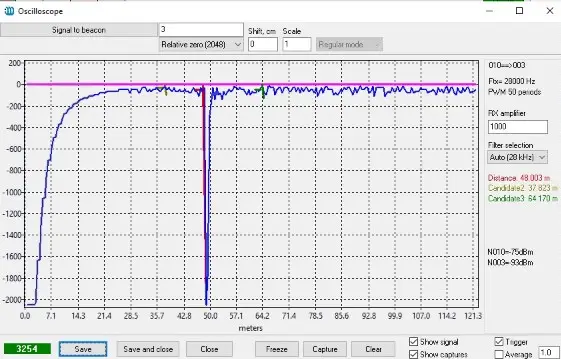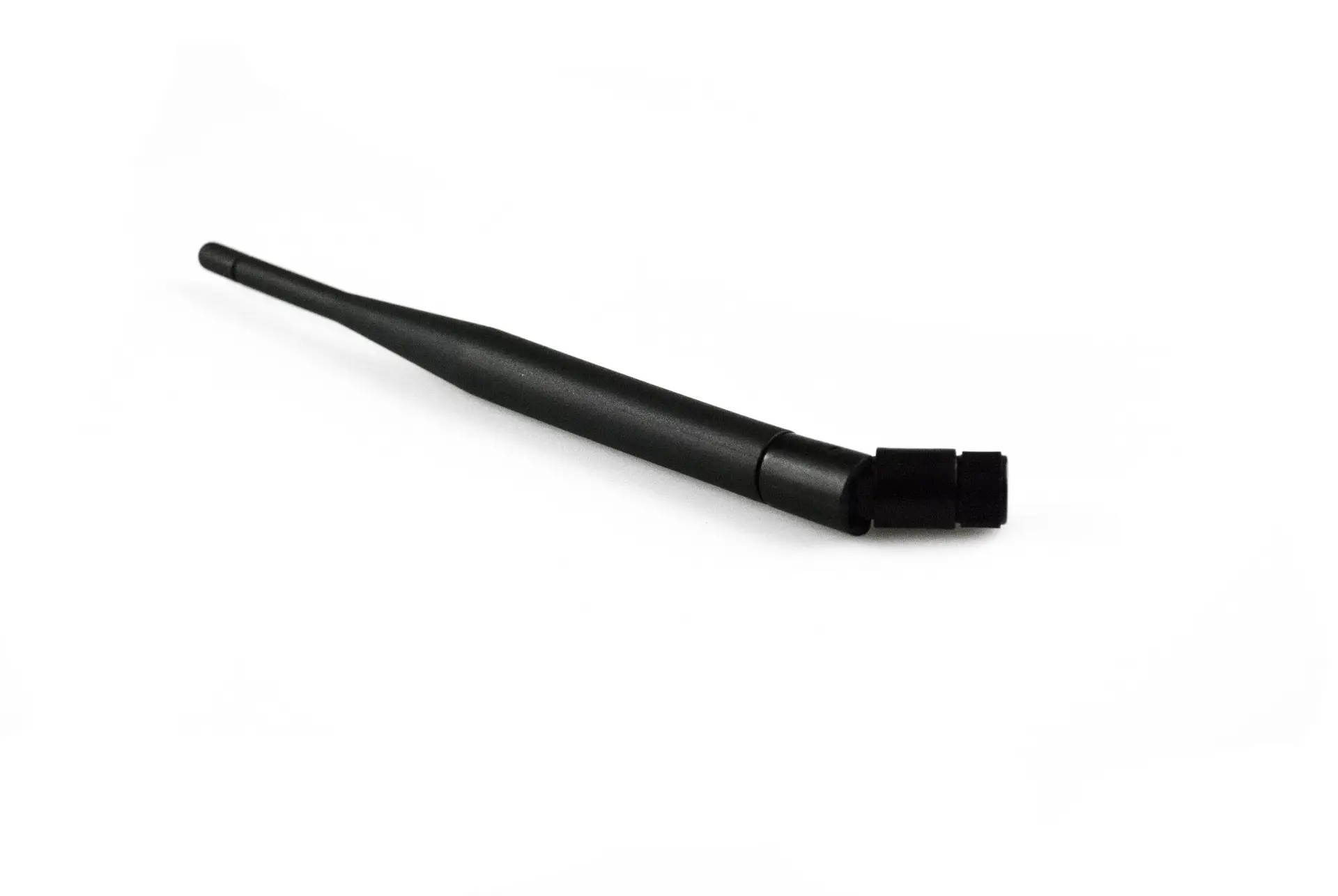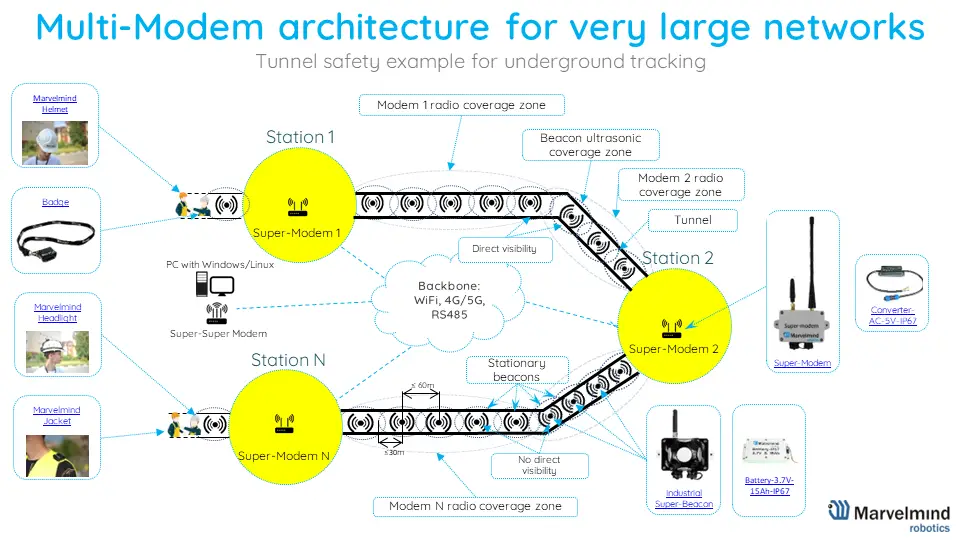What is the maximum range (size) of indoor positioning system?
We receive questions about the range or size of our indoor positioning system regularly. Let’s first agree on what exactly is asked. Very short answer:
- The size of the indoor positioning is system is virtually unlimited, but the farthest distance from a mobile beacon to stationary beacons with a direct line of sight must not more than 30 meters
Typical questions and short answers:
- Is it possible to cover the full warehouse? – yes
- Can we have an indoor positioning system in several km-long tunnels? – yes
- Is it possible to cover a multi-store building with a precise indoor positioning system? – yes

Before we dive deeper into the range question, let us stress one more time that the most crucial requirement for the system to work is the requirement of the line of sight:
- For tracking, the mobile beacon must have a direct line of sight (hearing) to two or more stationary beacons within 30 meters for 2D or three or more for 3D
Ultrasound range
The requirement mentioned above – a direct line of sight and not more than 30 meters – defines a submap. This range is limited by the ultrasound range, i.e., ultrasound pulses attenuate in the air, and after 30 meters or so they become too weak to firmly detect in the typical noise of an industrial plant or a warehouse.
But the map may consist of hundreds of submaps, and a super-map may contain hundreds of maps. Thus, the “range” or “size” can be hundreds of meters or even more.
Therefore, “the range” question will have different answers depending on what exactly is asked:
- If the question is what the maximum distance from the mobile to the serving stationary beacons is, then the answer would be: the recommended maximum distance is 30 meters in 2D/3D in typical industrial conditions. For 1D, we regularly test in laboratory conditions 50 meters (low external noise near the receiving beacon)
- The range in 1D can reach 120m with Marvelmind Horn. Horns are very useful not only because they amplify ultrasound pulses from the right directions but because they significantly attenuate signals from unwanted directions, thus dramatically increasing the signal-to-noise ratio dramatically. However, Horns are designed for 1D. Nevertheless, in some special cases, for example, cranes, you can get 2D or even 3D as a combination of 1D for the X-axis, 1D for the Y-axis, and 1D for the Z-axis
As soon as the size of the map reaches 100 meters or so, the radio range may start kicking in. The radio range can be even shorter with the default short-size 50mm antennas on both modem and beacon sides and unfavorable cross-polarization. With tiny ceramic antennas of Mini-RX and Mini-TX or antennas being parallel to metals, the range can be even shorter.
Thus, the first step to increase the radio range is to use the full-size antenna on the modem side. Remember that the beacons don’t talk to each other over the radio. They all are controlled by the modem in a star architecture. Therefore, improving the antenna and radio on the modem’s side will simultaneously improve connectivity to all beacons – mobile and stationary.
The next step would be to add the full-size antennas on the beacons’ side. But this means many antennas (less benefit per $ of investment. The antennas are not expensive, but you may have dozens or even hundreds of beacons. Still, it is the easiest and the most reliable solution to quickly improve the quality of tracking by reducing the chances of lost radio packets due to low radio signal.
Further improvement will come from using special antenna systems on the modems:
- Uni-directional antennas: the modem shall be placed on one side of the map
- Bi-directional antenna systems with the modem in the middle of the map and splitter
However, if the range is not limited by the sheer size of the area but by walls, better and larger antennas help little. It is required to use Multi-Modem Architecture. With the help of the architecture it is possible to cover areas of virtually unlimited size. Of course, it assumes that:
- Backbone network is possible and available
- The range within submap is still the same – up to 30 meters or so
Summary
The range of indoor positioning systems can be from ~30 meters to hundreds of meters and more depending on what exactly is meant and depending on the architecture used. Additionally:
- Marvelmind Indoor Positioning System (Marvelmind Indoor “GPS”) uses a layered approach. Thus, it is scalable in terms of coverage area and capacity. The upper size of the system is virtually unlimited
- Since we have complete control of the system architecture and its design to the deepest level, we can provide very high flexibility toward requirements and tune the system even further to your specific needs
Thus, relying on flexible Marvelmind Indoor “GPS,” it is possible to build systems for different applications, from autonomous robotics and drones to industrial automation and sports.
| M | T | W | T | F | S | S |
|---|---|---|---|---|---|---|
| 1 | 2 | 3 | 4 | |||
| 5 | 6 | 7 | 8 | 9 | 10 | 11 |
| 12 | 13 | 14 | 15 | 16 | 17 | 18 |
| 19 | 20 | 21 | 22 | 23 | 24 | 25 |
| 26 | 27 | 28 | 29 | 30 | 31 | |


